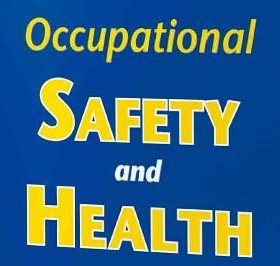Occupational Health and Safety Fundamentals
- Description
- Curriculum

A safe and healthy work environment is not just a privilege, it’s a fundamental right for every worker. Occupational Health and Safety (OHS) plays a critical role in preventing workplace accidents, illnesses, and injuries. This comprehensive course equips you with the knowledge and essential skills to promote a safe and healthy work environment. We’ll delve into the core principles of OHS, explore hazard identification and risk assessment techniques, and guide you through essential workplace safety measures. Whether you’re a business owner, manager, employee, or safety professional, this course empowers you to contribute to a culture of safety and well-being within your organization.
Course Objectives:
- Gain a thorough understanding of the fundamental principles of Occupational Health and Safety (OHS) and their importance in the workplace.
- Explore the legal framework surrounding OHS, including national and international standards and regulations.
- Develop skills for identifying workplace hazards, assessing potential risks, and implementing control measures.
- Learn best practices for accident prevention, incident investigation, and emergency preparedness.
- Understand the importance of ergonomics and safe work practices in preventing musculoskeletal disorders.
- Explore the role of personal protective equipment (PPE) in mitigating workplace hazards.
- Develop skills for effectively communicating safety information and procedures to employees.
- Foster a culture of safety within your organization by promoting employee participation and engagement in safety initiatives.
- Analyze the role of continuous improvement in maintaining a safe and healthy work environment.
Course Highlights:
Core Principles of OHS:
- Demystify Occupational Health and Safety (OHS) and its core principles.
- Explore the benefits of a safe and healthy workplace for both employers and employees.
- Analyze the ethical and legal implications of workplace safety.
The Legal Landscape of OHS:
- Understand the legal framework surrounding OHS, including relevant national and international standards and regulations.
- Explore the role of regulatory bodies and their enforcement mechanisms.
- Learn about workers’ rights and responsibilities regarding workplace safety.
Hazard Identification and Risk Assessment:
- Develop skills for identifying workplace hazards, including physical, chemical, biological, ergonomic, and psychosocial hazards.
- Master risk assessment techniques to evaluate the severity and likelihood of potential harm from identified hazards.
- Learn about the hierarchy of controls, prioritizing elimination and substitution of hazards over personal protective equipment (PPE).
Accident Prevention and Emergency Preparedness:
- Explore best practices for accident prevention in the workplace, focusing on proactive safety measures.
- Learn techniques for incident investigation, identifying root causes and preventing future occurrences.
- Develop an understanding of emergency preparedness procedures, including fire safety, evacuation plans, and first aid response.
Ergonomics and Musculoskeletal Disorders (MSDs):
- Understand the importance of ergonomics in preventing musculoskeletal disorders (MSDs) caused by repetitive tasks or improper posture.
- Learn how to design ergonomic workstations and implement safe work practices to minimize MSD risks.
Personal Protective Equipment (PPE):
- Explore the role of personal protective equipment (PPE) in mitigating workplace hazards when engineering controls are not feasible.
- Learn about different types of PPE and their appropriate selection and use for specific hazards.
Safety Communication and Training:
- Develop skills for effectively communicating safety information and procedures to employees at all levels.
- Understand the importance of safety training in promoting safe work practices and raising awareness of potential hazards.
Building a Culture of Safety:
- Explore strategies for fostering a culture of safety within your organization by promoting employee participation and engagement in safety initiatives.
- Learn how to empower employees to report safety concerns and actively contribute to a safe work environment.
Continuous Improvement in OHS:
- Analyze the importance of continuous improvement in maintaining a safe and healthy work environment.
- Explore techniques for monitoring safety performance, identifying areas for improvement, and implementing corrective actions.
Target Audience:
- Business owners, managers, and supervisors responsible for workplace safety.
- Health and safety professionals, safety officers, and safety committee members.
- Employees at all levels seeking to understand their rights and responsibilities regarding workplace safety.
- Human resources professionals involved in safety training and risk management.
- Anyone interested in promoting a safe and healthy work environment.
-
1Nvidia New Technologies Slides
Welcome to your first slider tutorial. This slides will start with a simple introduction. Then, You will open up google cause I"ll show you where you can download the blender software and which version of it will we be using in the entire course period.
Note: The download link is available with the lecture, plus the .pdf file is also included for you to download if you still need help downloading the software.
-
2Engine Target Audience
-
3Quiz: Mobile / Native Apps
-
4Realistic Graphic on UE4
-
5Volta GPU for optimization.
The Tensor Core GPU Architecture designed to Bring AI to Every Industry. Equipped with 640 Tensor Cores, Volta delivers over 100 teraflops per second (TFLOPS) of deep learning performance, over a 5X increase compared to prior generation NVIDIA Pascal architecture.
-
6Deep Learning








